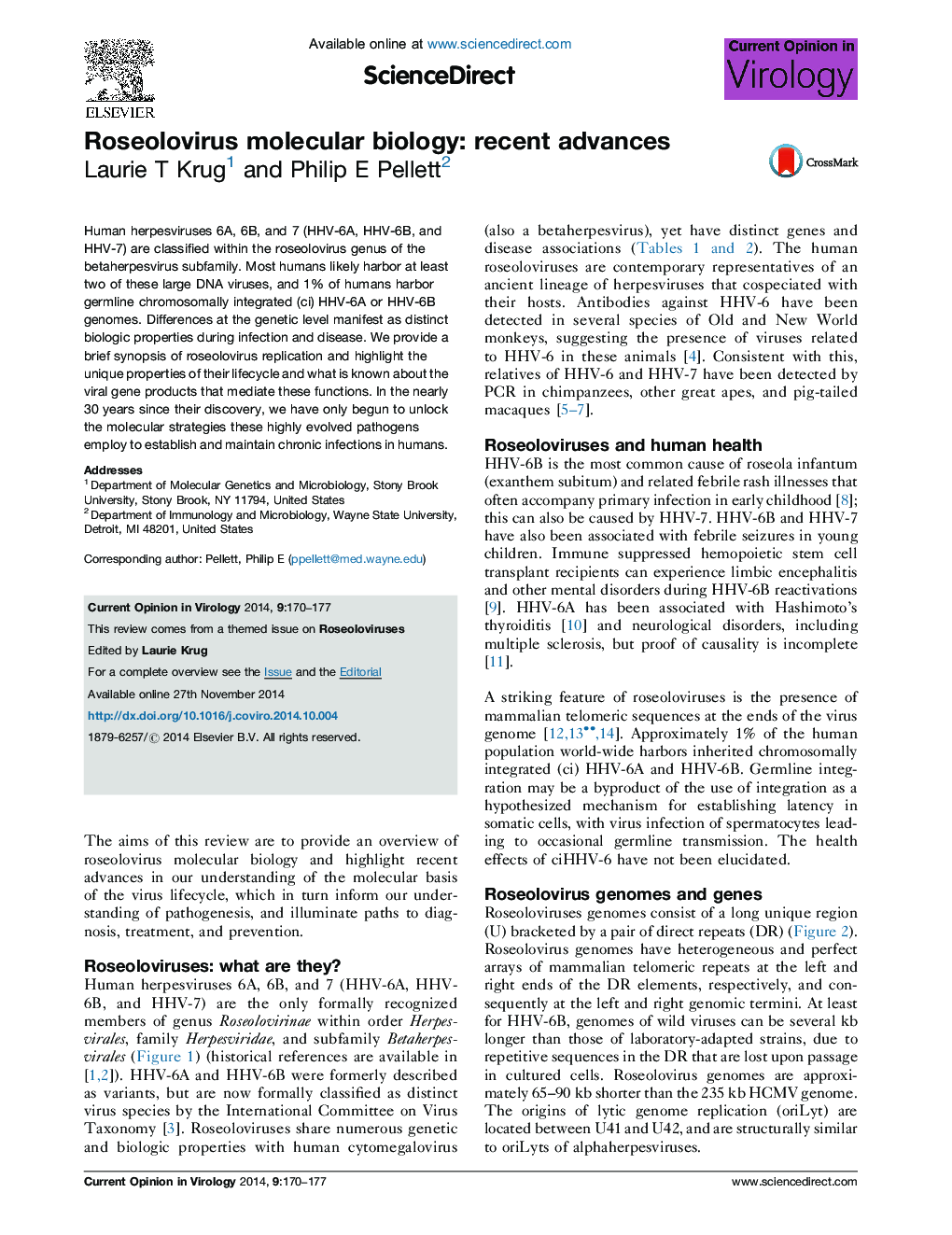| Article ID | Journal | Published Year | Pages | File Type |
|---|---|---|---|---|
| 2473343 | Current Opinion in Virology | 2014 | 8 Pages |
•HHV-6A, HHV-6B, and HHV-7 are distinct members of the roseolovirus genus.•HHV-6A and HHV-6B can integrate into the telomeres of the host chromosome.•Lytic infection involves regulated expression of viral proteins and noncoding RNAs.•Infection alters cellular processes, and innate and adaptive immune responses.•Many aspects of their molecular biology remain to be defined.
Human herpesviruses 6A, 6B, and 7 (HHV-6A, HHV-6B, and HHV-7) are classified within the roseolovirus genus of the betaherpesvirus subfamily. Most humans likely harbor at least two of these large DNA viruses, and 1% of humans harbor germline chromosomally integrated (ci) HHV-6A or HHV-6B genomes. Differences at the genetic level manifest as distinct biologic properties during infection and disease. We provide a brief synopsis of roseolovirus replication and highlight the unique properties of their lifecycle and what is known about the viral gene products that mediate these functions. In the nearly 30 years since their discovery, we have only begun to unlock the molecular strategies these highly evolved pathogens employ to establish and maintain chronic infections in humans.
Graphical abstractFigure optionsDownload full-size imageDownload as PowerPoint slide
